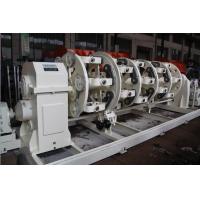Beyde Trading Co.,Ltd.(Know as Beyde) is the representative office
for cable stranding machine factory(Built in 1995)in Hebei, China.
BEYDE was set up to meet international business for those
factories. One hour and a half hours from Tianjin Port, China,
BEYDE keeps superior quality and competitive offers for global
valued customers.
BEYDE Trading Co.,Ltd. is a manufacturer engaged in producing cable machines many years. The main products in our company including wire drawing equipments, cable stranding machine, strandingmachinery, plastics extruder and cable Reel drum. We always insists on using the best material to make the machine, so our machines are durable than general machine. We have a lot of customers who use our machine over than 20 years and still using now. Besides, We are makers by
ourselves, not machine traders. Therefore, We sell to customers at a low price. We can
design any types machine according to the demand of customers. We offer professional
technique and services to our customers. Service overseas is
provided by our company. We look forward to become your most
valuable partner in the future. Let us create a wonderful future!
In 2019, due to the continuous increase of orders, the original
production workshop could no longer meet the production
requirements. Therefore, the management
of the company decided to repurchase a new piece of land of 10,000
square meters, and built the second processing plant in half a
year. branch, and recruited 50
skilled workers, led by professional team personnel, and achieved
good benefits, greatly relieving the pressure of production.
Beyde company is used for international advanced cable and wire
processing equipment. In China, we are the only real manufacturers
with independent processing and design capabilities.
The company produces 200-300 cable machines per year, especially
pipe stranding machines, accounting for 60% of the Chinese market.












